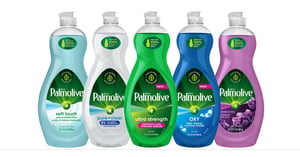As we have previously noted, rheology modifiers are common additives used to adjust both the overall viscosity magnitude of solutions and control non-Newtonian behaviors such as shear thinning or shear thickening. These vital additives are able to achieve desired viscosity, and can also help in controlling shelf stability, ease of application, texture, and processability.
One common rheology modifier is poloxamers. Poloxamers are ABA triblock copolymers with a structure that makes them amphiphilic substances, meaning they possess both hydrophilic and lipophilic properties. The specific microstructure will depend on the type of poloxamer, concentration, and temperature. Since poloxamers are available with different hydrophilic to hydrophobic ratios and total average molecular weights, they can be used in a broad range of applications.
In a previous post, we discussed the use of thermo-responsive poloxamers, such as Pluronics and Lutrol, to control viscosity. Today we are focusing our attention on the overall viscosity modification capabilities of Poloxamer 124.
Poloxamer 124 is a useful surfactant for the formulation of cosmetics and pharmaceuticals because it increases miscibility. Poloxamer 124 has also been used to control thickness (viscosity) of personal care products and dish soaps. (Fisher Scientific)
The amphiphilic nature of Poloxamer 124 results in self-assembly in the form of multimolecular aggregates at high enough concentrations. In aqueous solution, the polypropylene oxide (PPO) mid-blocks form a more hydrophobic core while the polyethylene oxide (PEO) end blocks extend into the solution forming hydrogen bonds with the water molecules. Unlike other applications where the thermo-responsive behavior is exploited, overall viscosity modification is the main benefit in this product. Poloxamer 124 may also contribute to enhanced solubilization of hydrophobic molecules which can be sequestered in the aggregate core.

Although often used as excipients for their thermo-responsive viscosity behavior, poloxamers are also included in common household products for general viscosity enhancement and increased solubilization of hydrophobic molecules. The same complex microstructures that produce viscosity modification can also make sample preparation challenging.
However, the VROC® initium automated viscometer facilitates the thorough characterization these complex fluids while also identifying issues with sample inhomogeneity. Download our new application note "Poloxamer 124 as a Rheology Modifier in Household Products" to learn more about shear rate dependent viscosity data for Palmolive Original liquid dish soap, containing poloxamer 124 for viscosity enhancement. As well as a discussion on the importance of sample homogeneity and how it can influence viscosity measurements.
Written by: Eden Reid, RheoSense Senior Marketing and Sales Operations




